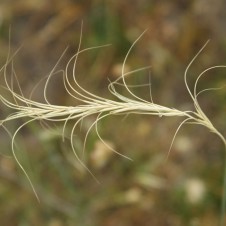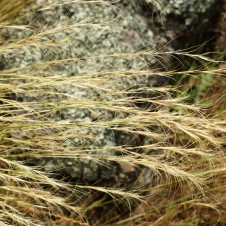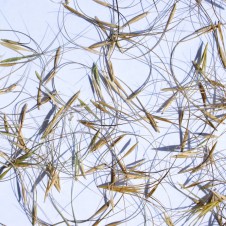General Description: An open tufted, perennial grass with an erect or arched flower stem to 80 cm tall. Inflorescence an elongated, often drooping spike to 15 cm long bearing spikelets with long, curved awns. Leaves are in a sparse tuft at the base and are long and thin and green or bluish in colour.
Flowers and Fruit: Flowering stems usually to 50cm. Long awns curved evenly and widely spreading at seeding. Flower spike has 6-12 flowers and a wheat-like appearance when young. Flowers from July to December.
Site Preference and Tolerances: Prefers low slopes and is found in plains grasslands and grassy woodlands. Tolerates dry conditions.
Life Span: This is a perennial grass and persists well in the Australian environment.
Wildlife Value: A food source for many butterflies.
Other Values and Uses: This is an important component of native grassland and the flowers have been described as wheat-like which is how it got its common name.
Other Scientific Names: Agropyron scabrum, Agropyron scabrum var. scabrum, Elymus rectisetus, Elymus scaber, Elymus scaber var. scaber, Festuca scabra, Roegneria scabra, Triticum scabrum, Vulpia rectiseta, Elymus scabrus
Other Common Names: Common Wheat Grass, Common Wheatgrass, Rough Wheat-grass
Germination Information: Usually grows well in a few weeks without any treatment.



